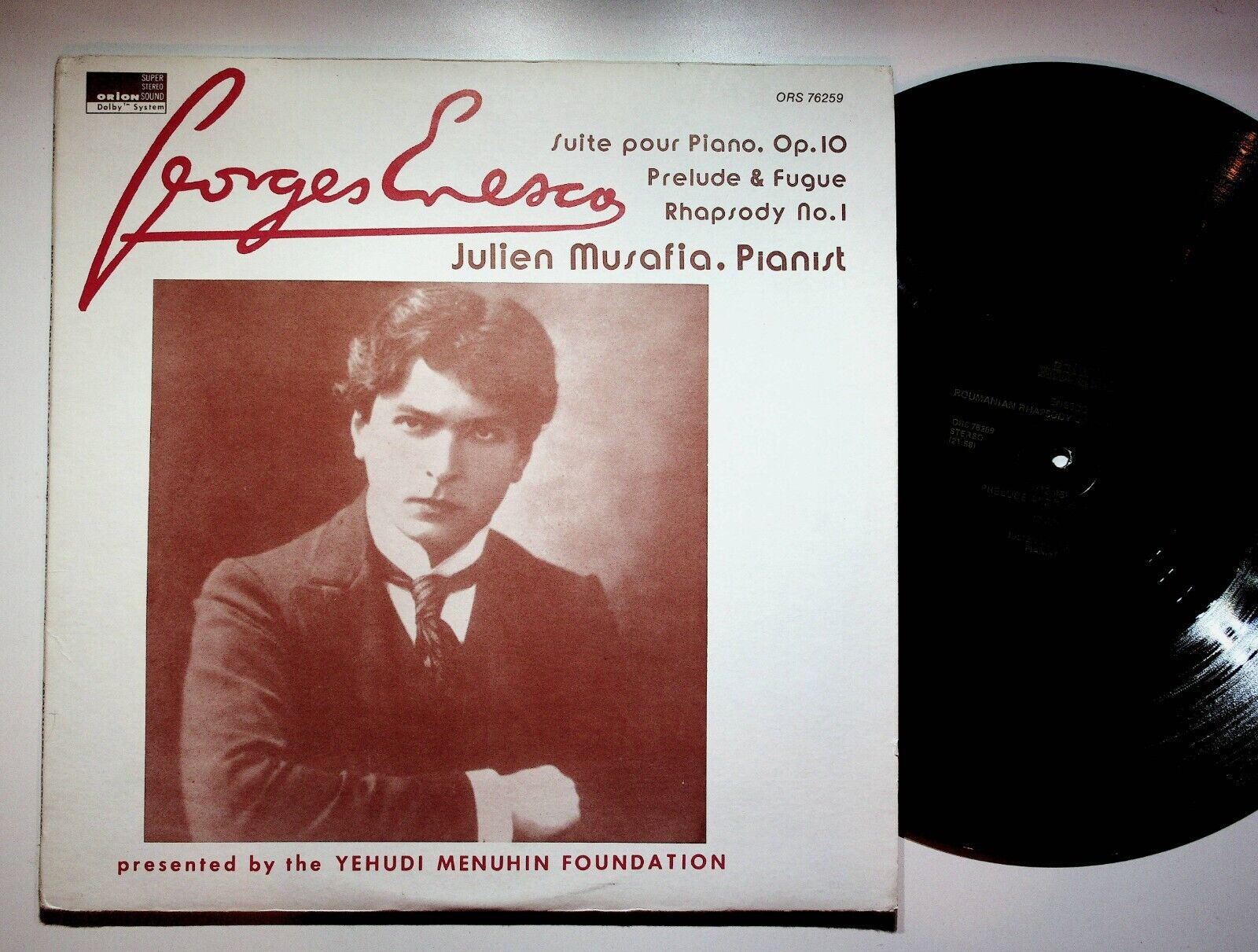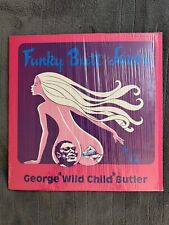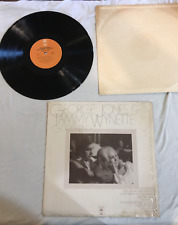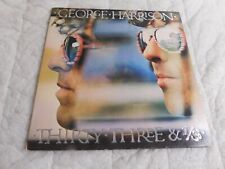
Bands
Bands 0-9 / A
Bands Ba-Bk
Bands Bl-Bz
Bands C
Bands D-E
Bands F-H
Bands I-L
Bands M-O
Bands P-Si
Bands Sm-Sz
Bands T-W
1976 George Enesco Julien Musafia Piano Suite Rhapsody No 1 Vinyl LP Record VG+ For Sale
 When you click on links to various merchants on this site and make a purchase, this can result in this site earning a commission. Affiliate programs and affiliations include, but are not limited to, the eBay Partner Network.
When you click on links to various merchants on this site and make a purchase, this can result in this site earning a commission. Affiliate programs and affiliations include, but are not limited to, the eBay Partner Network.
1976 George Enesco Julien Musafia Piano Suite Rhapsody No 1 Vinyl LP Record VG+:
$21.59
Yes we combine shipping for multiple purchases.Add multiple items to your cart and the combined shipping total will automatically be calculated.1976 George Enesco Julien Musafia Piano Suite Rhapsody No 1 Vinyl LP Record VG+
Record Grade per Goldmine Standard:VG+
GEORGE ENESCO, born Liveni, Roumania, 1881, diedParis, France, 1955\'“In the world of music” — Enesco said — ‘‘I am fivein one: composer, conductor, violinist, pianist andteacher. I prize most the gift of composition and nomortal can possess a greater happiness ...”Indeed, Enesco was, perhaps, the most com-prehensive and multilateral contemporary musician.As a performing artist he was great among the greats,but his composing side is the most revelatory of hiscomplex personality, and certainly his most enduringlegacy.The index of his works lists only 33 opus numbers.They were all born from the desire to communicate athought or an emotion and were crafted with love andmost meticulous care. To the last, in the ChamberSymphony for Twelve Solo Instruments (composed onhis death-bed to which he was nailed for the last year ofhis life by a merciless disease) he wanted his exact in-tentions communicated to the performers through in-dications of dynamics, accents, phrasing, bowing,pedalling etc. added to virtually every note in the score.Enesco was not preoccupied with the creation of apersonal style. ‘‘Do not try a new language,” he wouldsay to students, ‘‘but try in your own language to ex-press exactly that which you feel. Originality is obtainedby those who do not search for it.” Without searchingfor individuality at all costs, Enesco succeeded in im-pressing even on his first works a personal touchderived precisely from the strength of his feeling andthe sincerity with which he expressed it.The Suite No. 2 in D Major appeared in 1903 as anextension of the neo-classic element brought forth thesame year in his Suite No. 1 for Orchestra. It was com-posed on the occasion of the international contest forcomposition organized by the magazine “Musica” ofParis. On the jury were Debussy, Dukas, Massenet,Gedalge, Cortot, D’Indy, Pierne and others. The Suitewas appreciated by Massenet as having “the most ar-tistic taste and sensitivity,” and was accorded 1st prizeamong the suites for piano.The early influences in the formation of Enesco’smusical ethos — Wagner, Ravel, Debussy — are feltlike a light breeze throughout this work: the first in thecomplex chromaticism of the Toccata; the second inthe refined elegance of the form of the Sarabande,which bears the indication “Noblement” and of thePavane; the latter through the contrasting sonoritiesand the underlying contrapunted rhythms of theBourree. The entire piece is imbued with that spiritwhich attests to the correctness of Enescu’s belief thathe was “an incorrigible lyric.”Of the Roumanian Rhapsody in A Major forOrchestra written in 1901, the composer’s words areworth noting: “I consider folk melodies perfect in them-selves. To use them in a symphonic work is equivalentto weakening and diluting them. I see only one excep-tion: using folklore in Rhapsodies where popularmelodies are juxtaposed, not reworked. They can beamplified one way only: by dynamic progression orrepetition, without changes, additions or fillers.”This Roumanian Rhapsody is in the universalmusical literature a prime example of genial intuitioninto the most fundamental and pervasive characteristicof a people’s nature. The pastoral imagery, wistfulness,nobility, vibrant lyricism and explosive happiness foundin this piece are the most direct depiction of theRoumanian peasant’s view of life.The piano version was written by the composer in1949.The Prelude and Fugue dates from September 11,1903. It has no opus number and is not mentioned inthe major sources of information about Enesco.Notes by Julien MusafiaDolby is a trademark of Dolby Laboratories Inc.JULIEN MUSAFIA was born in Bucharest,Roumania, started piano study at the age of 4 andmade his debut under sponsorship of the newspaper‘Dimineata” at the age of 61/2 when he played Bee-thoven\'s Sonata op. 49 in G Major. Upon graduationfrom the Royal Academy of Music (Muza Germani-Ciomac, piano, Mihail Jora, harmony-counterpoint) hewas accorded the “Paul Ciuntu\" Prize, the same awardgiven Dinu Lipatti several years earlier. He studiedfurther with Florica Musicescu in Bucharest, with IsabelVengerova in New York and with Jakob Gimpel inHollywood. He has concertized on 3 continents andrecorded for MGM and Columbia Pictures inHollywood, and for the National Iranian Radio-Television in Teheran.As a devotee of the music of Shostakovich he haspublicly performed all his solo piano and chamberworks, and conducted several of his orchestral works.In 1969 he gave the American premiere of the complete24 Preludes and Fugues, op. 87, and gave in NewYork’s Carnegie Hall the permiere of Op. 127 in thecompany of Mstislav Rostropovich and GalinaVishnevskaya.In 1972 he published a new edition of the 24Preludes and Fugues with the collaboration of the com-poser. Another publication, THE ART OF FINGERINGIN PIANO PLAYING, (MCA, 1971) is the first com-prehensive book published on the subject.In the years 1944-46 Musafia attended many ofEnesco’s concerts and rehearsals, including his famedseries with Yehudi Menuhin, and also the tour-de-forceduring his last year in Roumania of weekly solo recitals,solos with orchestra, chamber music and concerts con-ducting the Bucharest Philharmonic.Musafia is professor or advanced performance inpiano at California State University, Long Beach.Liorary of Congress Catalog Card No. 76-750772(Suite, Prelude & Fugue): 76-750773 (Rhapsody).Recording/Editing: Giveon CornfieldProduction: Marion Cornfield
lp1266

Related Items:
George Wild Child Butler , Funky Butt Lover, 1976 Original Roots, NM/NM, Shrink
$100.00
Vintage 1976 George Jones & Tammy Wynette – Golden Ring 34291 LP33 FREE S/H
$14.99
GEORGE HARRISON "33 Thirty Three 1/3" (1976 LP) DH-3005
$15.99
![]()
Coming Soon
- a teens
- AC/DC
- AKA
- al green
- alan jackson
- Alice Cooper
- Alien Ant Farm
- Allman Brothers, the
- Alton Ellis


